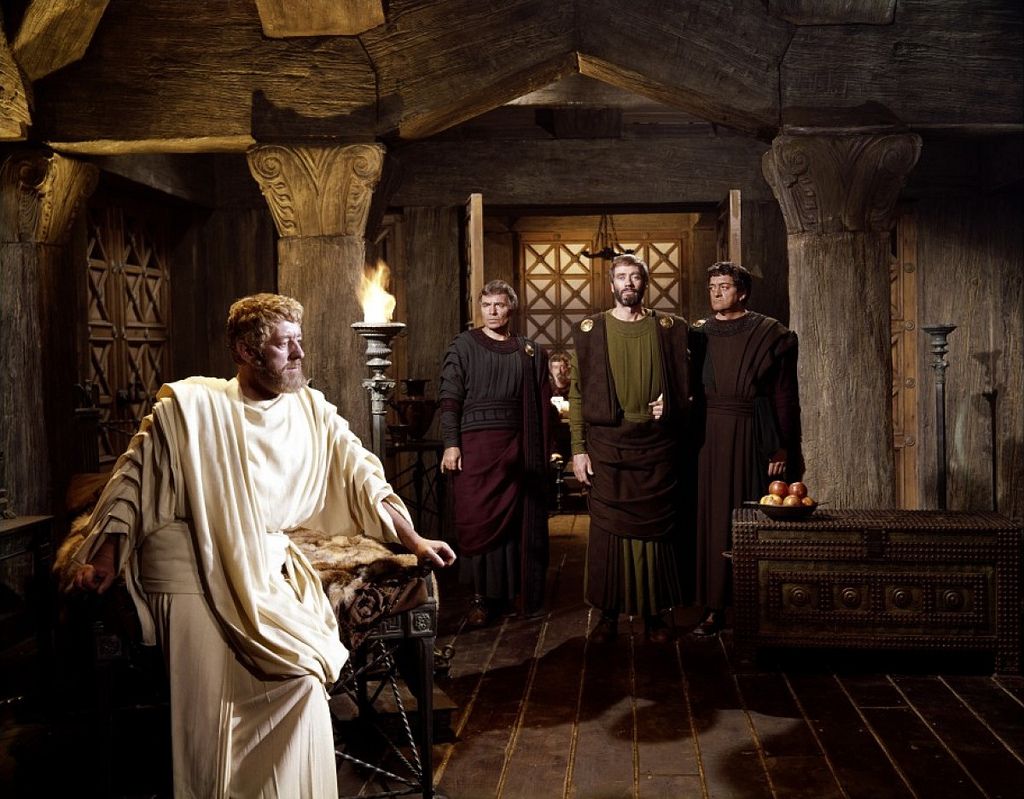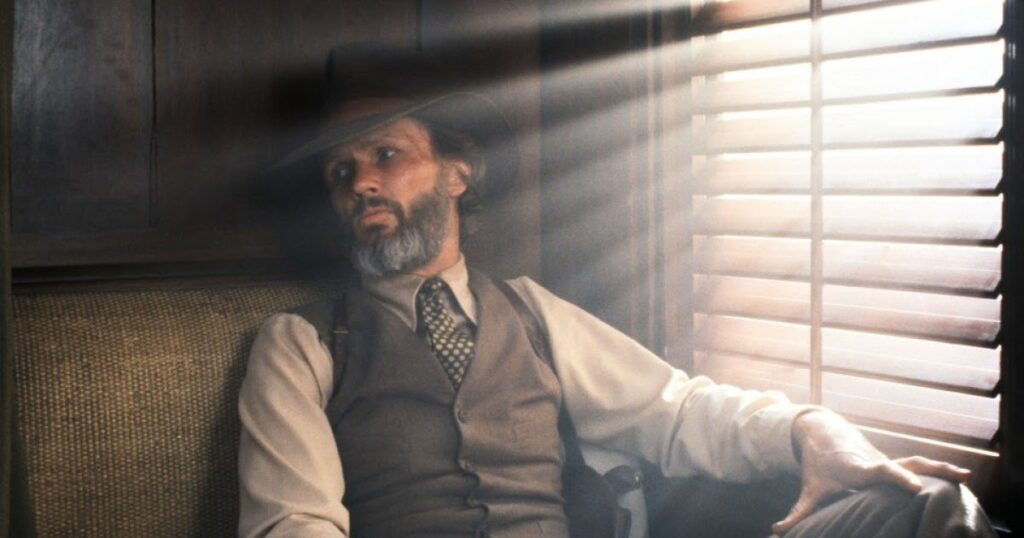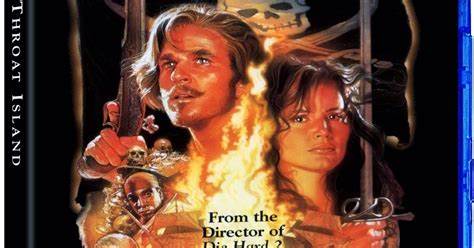
Movies, in their essence, are dreams made real on screen, but the journey from an ethereal idea to a blockbuster reality is fraught with immense financial peril. It’s a business where studios routinely gamble tens, even hundreds of millions, on a single production, hoping to capture the zeitgeist and recoup their astronomical investments. The inherent risk is colossal; even a film that “makes gobs of money” can still fall short of its break-even point, which often sits at double or even 2.5 times the production budget due thanks to the relentless costs of marketing and distribution.
While many studios can absorb these losses, leveraging successes from other ventures or streaming rights to balance the books, there are cautionary tales. Every so often, a box office bomb isn’t just a misstep; it’s an existential threat. These are the films so devastatingly unprofitable, so thoroughly rejected by audiences and critics alike, that they drag their very creators down with them, forcing studios to shut their doors, sell off assets, or completely redefine their identity.
This article delves into the dramatic stories of nine such production houses that, despite their varied histories and ambitions, all shared a common, tragic fate: their ruin was directly precipitated by one colossal, over-budget flop. We’ll explore the films that became millstones around their necks, the behind-the-scenes struggles, and the lasting impact these cinematic failures had on the landscape of Hollywood.

1. **Liberty Films – It’s a Wonderful Life**Liberty Films was born from the ambitious vision of legendary filmmakers Frank Capra, William Wyler, and Samuel J. Briskin, founded in 1945 with the intention of producing a slate of 15 pictures. Their inaugural project, a film that would later become a perennial Christmas classic, was “It’s a Wonderful Life.” Starring the iconic James Stewart as George Bailey, the movie tells the poignant story of a man contemplating suicide until his guardian angel reveals the profound impact he’s had on others’ lives. It was meant to be a triumph, a defining Frank Capra classic, but its initial reception painted a very different picture.
The studio poured $2.3 million into its production – a hefty sum for 1946, equivalent to $36 million when adjusted for inflation today. Capra and his team envisioned a masterpiece, a film that would resonate deeply and launch their new studio into sustained success. The expectation was that such a heartfelt and star-studded production would easily captivate audiences and secure its financial future. However, the immediate box office returns told a starkly different and devastating story, one that would quickly unravel Liberty Films’ grand plans.
“It’s a Wonderful Life” managed to rake in only about $2 million at the box office, significantly less than its production cost, let alone its break-even point. This catastrophic financial loss was simply too much for the nascent Liberty Films to bear. The studio’s ambitious plan for 15 films quickly ran “afoul with reality,” and it became clear that they couldn’t cope with the immense financial setback. Facing foreclosure and an insurmountable debt, Liberty Films had no choice but to sell its assets to Paramount Pictures and promptly shut its doors. The very founders, Capra, Wyler, and Briskin, were left to cash in their company for Paramount stock and accept jobs at the studio, a humbling end for their independent dream. Ironically, despite its financial failure and studio-killing impact, the film received five Academy Award nominations, including Best Picture and Best Director, slowly growing into the beloved masterpiece it is recognized as today, a bittersweet legacy for the studio it destroyed.
Read more about: Beyond the Blockbuster: 15 Historical Epics That Rewrote Reality on the Big Screen

2. **Samuel Bronston Productions – The Fall of the Roman Empire**The 1960s were a golden age for Hollywood epics, a genre that had seen immense success with films like “Ben-Hur” and “The Ten Commandments” in the preceding decade. Riding this wave of grand historical narratives, Samuel Bronston Productions, under the guidance of its namesake, embarked on its own ambitious project: “The Fall of the Roman Empire.” This film, a loose adaptation of Edward Gibbon’s monumental work, was designed to capture the sprawling drama and spectacle that audiences craved. It featured a truly all-star cast, boasting names like Sophia Loren, Alec Guinness, James Mason, Stephen Boyd, Christopher Plummer, Omar Sharif, and Mel Ferrer, promising a cinematic experience of unparalleled scale.
Initially, the project seemed to have a crucial element for success in the epic genre: Charlton Heston, whose presence was almost a prerequisite for such a film to thrive. However, Heston famously backed out before production commenced, leaving Stephen Boyd to step into the pivotal role of Livius. This early setback was just a harbinger of the financial challenges to come. Like all epics of its era, “The Fall of the Roman Empire” was inherently expensive, eventually accumulating costs of $19 million, which translates to a staggering $187 million in today’s money, a true testament to the scope of its production design and historical recreation.
Despite its star power, lavish sets, and a narrative drawn from a classic historical text, “The Fall of the Roman Empire” failed to resonate with audiences, proving to be a monumental box office disappointment. It managed to gross only around $4.75 million globally, a paltry sum compared to its enormous production budget. The devastating financial loss was too profound for Samuel Bronston Productions to recover from. The company was forced to cease business operations in 1964, the very same year its magnum opus was released, and subsequently entered into bankruptcy proceedings. The repercussions extended even further, as Samuel Bronston himself was convicted of perjury as a result of the proceedings, though he successfully appealed his case to the Supreme Court, highlighting the personal and professional wreckage left in the wake of this single, over-budget flop.

3. **ITC Entertainment – Raise the Titanic**Before James Cameron’s record-breaking “Titanic” captivated the world, the ill-fated RMS Titanic had already been a source of enduring fascination and numerous cinematic endeavors. One of the most ambitious and, ultimately, financially ruinous attempts to bring the legend to the screen was ITC Entertainment’s “Raise the Titanic,” an adaptation of Clive Cussler’s popular novel. The premise itself was intriguing: a mission to recover the sunken liner to retrieve precious cargo hidden within its watery grave. The film was released five years before the actual wreck was discovered, making some reasonably educated guesses about its state.
ITC Entertainment, under the stewardship of producer Lew Grade, committed a staggering $40 million to produce the film. This budget was intended to create an authentic and compelling spectacle, but much of it was consumed by incredibly specific and expensive practical effects. For instance, a colossal 55-foot-long scale replica of the Titanic, weighing a massive 10 tons, was constructed at an eye-watering cost of $5 million. Furthermore, a custom-built tank, costing $3.3 million, was required to house this elaborate model and simulate the ocean environment. These were massive investments, underscoring the studio’s belief in the project’s potential.
However, the grand expenditure proved to be an exercise in futility. “Raise the Titanic” spectacularly failed to recover its costs, grossing a mere $7 million at the box office. The film’s financial performance was so abysmal that it didn’t even cover the cost of the scale replica and the tank used to film it, let alone the entire production. Years later, producer Lew Grade famously quipped to the Independent, “It would be cheaper to lower the Atlantic than raise the Titanic,” a candid admission of the film’s catastrophic financial mismanagement. “Raise the Titanic” marked the end of a string of commercial failures for ITC Films and its distributing arm, Associated Film Distribution (AFD). The profound losses forced ITC to sell AFD and the distribution rights to its extensive film library to Universal Pictures. While ITC Entertainment itself continued to exist, it was a shadow of its former self, forced to divest more assets over time, eventually shifting primarily into television distribution before finally shutting its doors for good in 1998, a direct casualty of its epic maritime misadventure.
Read more about: Leaving School for Stardom: 14 A-List Celebrities Who Chose Dreams Over Diplomas

4. **United Artists – Heaven’s Gate**Director Michael Cimino was at the zenith of his career following the monumental success of “The Deer Hunter” in 1978, a film that garnered him Academy Awards for Best Picture and Best Director. With such critical and commercial accolades under his belt, expectations were astronomically high for his follow-up project. However, just two years later, Cimino unleashed “Heaven’s Gate,” a film that would not only completely squelch all the positive buzz he had accumulated but also fundamentally alter the trajectory of a legendary Hollywood studio. The film, set in 1890s Wyoming, depicted a bitter dispute between immigrant settlers and powerful land barons, featuring an ensemble cast of stars including Christopher Walken, John Hurt, Kris Kristofferson, Sam Waterston, and Jeff Bridges.
Troubles began almost immediately on the set of “Heaven’s Gate.” An initial budget of $7.5 million rapidly spiraled out of control, quickly jumping to $11.6 million before ultimately ballooning to an astonishing $44 million. Cimino’s directorial style was notoriously tyrannical, earning him a reputation for being a dictator on set and drawing negative attention to an already problematic production. His relentless pursuit of perfection led to countless takes and retakes, each one adding to the burgeoning budget and pushing the schedule further behind. Within just the first five days of shooting, the production was already six days behind schedule, a clear indication of the impending chaos and financial disaster.
When “Heaven’s Gate” finally reached audiences, it was met with near-universal condemnation from critics, and audiences, forewarned by the negative buzz and its epic runtime, avoided it in droves. The film grossed less than $4 million at the box office, an infinitesimal return on its gargantuan investment. This colossal financial failure delivered a devastating blow to United Artists’ bottom line. United Artists, an esteemed independent studio co-founded in the 1920s by titans like Charlie Chaplin, was severely compromised. The studio, unable to weather such an immense loss, effectively lost its independence, becoming a subsidiary of MGM. “Heaven’s Gate” didn’t just end Michael Cimino’s golden era; it directly led to the collapse of United Artists as a standalone film company, serving as a stark reminder of how quickly ambition can turn into financial ruin in the cutthroat world of Hollywood.
Continuing our journey through the annals of cinematic history, we uncover even more profound tales of ambition, innovation, and ultimately, financial ruin. These are the narratives of studios, some established and some emerging, that were brought to their knees by the colossal weight of a single, ill-fated production. The following five examples further underscore the brutal realities of Hollywood, where even the brightest creative sparks can ignite a financial inferno that consumes everything in its path.
Read more about: From Glory to Ghosted: 10 Directors Whose Careers Crumbled After One Epic Box Office Bomb

5. **Zoetrope Studios – One From the Heart**Francis Ford Coppola is undeniably one of the most revered directors of his generation, a visionary behind masterpieces like “The Godfather” trilogy and “Apocalypse Now.” Yet, even a filmmaker of his caliber could not escape the perilous financial tightrope of Hollywood. Following the demanding production of “Apocalypse Now,” Coppola yearned for complete creative autonomy, deciding to fully establish his production company, Zoetrope Studios, as an independent studio and personally finance its projects.
His next venture, the 1982 musical romantic comedy “One From the Heart,” was a bold departure from his previous work. Set in a stylized Las Vegas, the film presented a unique musical concept where the songs, performed by Tom Waits and Crystal Gayle, served as an internal commentary rather than being sung by the on-screen characters. Coppola’s unconventional vision extended to the visuals, employing long takes, painted matte shots, and unusual aspect ratios to create a disorienting, dreamlike aesthetic.
However, this artistic freedom came at an astronomical cost. Coppola’s personal financing meant he borrowed heavily from Chase Manhattan Bank, among others, to fund the picture. The initial budget of $15 million for a romantic comedy rapidly ballooned to an astounding $25 million. This put immense pressure on “One From the Heart” to be a monumental hit, far surpassing typical expectations for its genre, simply to break even and cover the colossal investment.
Unfortunately, the film’s unconventional nature and persistent negative publicity surrounding its production woes translated into a catastrophic box office performance. “One From the Heart” managed to gross less than $1 million, a paltry sum against its massive budget. This financial devastation directly led to Coppola declaring bankruptcy for the third time in nine years and Zoetrope Studios filing for Chapter 11. While the studio didn’t entirely cease operations, the debacle upended Coppola’s finances for over a decade and forced a significant restructuring, effectively costing Zoetrope Studios all the goodwill earned by its previous successes and eventually giving way to American Zoetrope.

6. **The Ladd Company – The Right Stuff**Sometimes, even a film lauded by critics and adorned with prestigious awards can become a studio’s undoing. Such was the paradoxical fate of “The Ladd Company” with its 1983 epic, “The Right Stuff.” This exceptional film meticulously chronicled the founding of the American space program and the pioneering Mercury Seven astronauts, boasting a stellar ensemble cast including Sam Shepard, Scott Glenn, Ed Harris, and Dennis Quaid. Its critical acclaim was undeniable, culminating in four Academy Awards from eight nominations.
Despite its artistic triumph and critical accolades, “The Right Stuff” proved to be a severe commercial disappointment. Produced with a budget of $27 million, the film struggled to find an audience, bringing in less than $22 million at the box office. Its considerable length, nearly 200 minutes, combined with stiff competition at the time of its release, likely contributed to its inability to draw the crowds necessary to recoup its significant investment.
For The Ladd Company, “The Right Stuff” was not an isolated incident but the final blow in a string of financial failures. The film’s poor box office performance prompted Warner Bros., their distributor, to cease releasing films by the company. This loss of a major distribution partner was a crippling setback, forcing The Ladd Company into a desperate search for new avenues to bring its projects to market.
While The Ladd Company attempted to navigate this new landscape, intermittently working with Paramount Pictures and Miramax Films for limited releases, it never truly recovered from the financial impact and the severing of its Warner Bros. contract. The inability to secure consistent, wide distribution for its subsequent projects eventually led to its closure in 2007, a somber end to a studio that, ironically, produced one of the most critically celebrated films of its era.
Read more about: From Quirky to Coveted: 14 Ugly American Cars That Are Now Seriously Cool Collector’s Items

7. **Cannon Films – Superman IV: The Quest For Peace**The Superman film franchise, initially soaring to unprecedented heights with “Superman: The Movie” and “Superman II,” proved that live-action superhero cinema could be both successful and critically acclaimed. However, as often happens in Hollywood, subsequent installments saw a decline in quality and audience interest, culminating in the widely panned “Superman IV: The Quest For Peace.” This 1987 film saw Superman attempting to rid the world of nuclear arms, only to face an evil, solar-powered clone unleashed by Lex Luthor.
The production of “Superman IV” was fraught with problems, largely due to the financial woes of its studio, The Cannon Group, Inc. Cannon had overextended itself by taking on too many projects simultaneously, leading to a severe financial crisis midway through the film’s development. This resulted in drastic budget cuts, slashing the initial $30 million allocation to a mere $17 million, and forcing the removal of 30 minutes of footage from the final cut, significantly compromising the film’s quality.
Unsurprisingly, the heavily compromised film was met with widespread critical condemnation, and audiences largely avoided it. Despite making $36.7 million at the box office, which might superficially appear to double its cut budget, the film still represented a significant loss when accounting for its initial planned budget, marketing, and distribution costs. Critics universally panned it, with the Razzie Awards even bestowing upon it the dubious honor of “worst drama of [the Razzies’] first 25 years.”
“Superman IV: The Quest For Peace” was just one symptom of Cannon Films’ larger financial collapse. At the same time, the studio had also poured millions into a live-action adaptation of “Masters of the Universe,” which similarly bombed. Facing bankruptcy and an investigation by the Securities and Exchange Commission, Cannon was ultimately forced to sell its assets to Pathé Communications. Despite later attempts at revival, the studio became defunct in 1994, with “Superman IV” standing as a stark reminder of how financial mismanagement can cripple a film and its parent company.

8. **Carolco – Cutthroat Island**Few films bear the distinction of being a record-holder for box office bombs, but Renny Harlin’s 1995 swashbuckler, “Cutthroat Island,” infamously earned the title of the biggest box office flop of all time from Guinness World Records, a label it held for years. Intended as a grand tentpole to revitalize the pirate genre, the film instead effectively sank it for nearly a decade, demonstrating how a single catastrophic failure can have industry-wide repercussions. The movie starred Geena Davis and Matthew Modine in what was widely considered a surprisingly dull pirate adventure.
Production on “Cutthroat Island” was a nightmare from its inception. The film suffered numerous setbacks, including the high-profile departure of Michael Douglas, necessitating Matthew Modine to step into his role. The creation of incredibly elaborate and authentic wooden sailing ships for the set proved exorbitantly expensive, only to require costly rebuilding. What began as an already high initial budget of $60 million rapidly spiraled, ultimately nearing $100 million by the time shooting concluded.
Compounding the production woes, critics tore the film apart upon its release, with its failure significantly hampering the careers of many involved. Carolco Pictures, the studio behind the film, had pinned its hopes on “Cutthroat Island” to alleviate its substantial existing debts. However, the exact opposite occurred, transforming a desperate gamble into an unmitigated disaster.
Carolco ultimately faced an estimated loss of $147 million from “Cutthroat Island,” a blow from which the company could not recover. Despite attempts to sell its assets, including a deal with 20th Century Fox that fell through, the studio was irrevocably damaged. The film that was meant to be Carolco’s salvation instead dug a much deeper hole, walking the production company right off the plank and into bankruptcy and oblivion, making it a legendary cautionary tale of Hollywood hubris.

9. **ImageMovers Digital – Mars Needs Moms**Animated films, particularly computer-generated ones, represent a monumental investment of time, talent, and technology. The costs associated with equipment, rendering power, and a vast pool of skilled animators mean that studios often gamble hundreds of millions on these projects. While many manage to find success through theatrical runs, home video, and streaming, some fall tragically short, as was the case with 2011’s “Mars Needs Moms.”
This film, a collaboration between Walt Disney Pictures and ImageMovers Digital, was an ambitious venture utilizing pioneering motion-capture animation. However, despite the innovative technology, “Mars Needs Moms” catastrophically failed to attract an audience. The film’s inability to resonate with viewers resulted in enormous losses for both companies involved, marking one of the most significant financial debacles for a Disney-branded movie at the time of its release.
The numbers paint a stark picture of the disaster: “Mars Needs Moms” garnered a paltry $39.2 million at the box office against a combined production and marketing budget of a staggering $175 million. This abysmal return left a gaping hole in the finances of ImageMovers Digital, the studio founded by acclaimed director Robert Zemeckis, who had championed the motion-capture animation style featured in films like “Beowulf” and “A Christmas Carol.”
The consequences for ImageMovers Digital were swift and brutal. Even before the film’s theatrical release, Disney made the decisive move to shut down the studio entirely, phasing out its 450 employees over the course of a year as a cost-cutting measure. This closure not only ended Zemeckis’s ambitious foray into this specific animation technique but also canceled planned future projects, including a highly anticipated 3D adaptation of The Beatles’ “Yellow Submarine,” proving that even pioneering technology and a major studio backing cannot guarantee survival in the face of a monumental flop.
These stories serve as powerful reminders that the dream factory of Hollywood, for all its glamour and magic, is fundamentally a high-stakes business. Each of these studios, from the independent visionaries to the genre specialists, bet big on a single project, only to see their ambitions crumble under the weight of over-budget productions and audience indifference. The lasting legacy of these films is not just their individual failures, but the profound impact they had on the companies that dared to create them, forever altering the landscape of an industry built on dreams and dollars.



